Potrebujeme váš súhlas na využitie jednotlivých dát, aby sa vám okrem iného mohli ukazovať informácie týkajúce sa vašich záujmov. Súhlas udelíte kliknutím na tlačidlo „OK“.
ASTM D2653-07(2012)
Standard Test Method for Tensile Properties of Elastomeric Yarns (CRE Type Tensile Testing Machines)
Automaticky preložený názov:
Štandardná skúšobná metóda pre mechanické vlastnosti elastomérne priadze (CRE typ skúšky ťahom stroja)
NORMA vydaná dňa 1.7.2012
Informácie o norme:
Označenie normy: ASTM D2653-07(2012)
Poznámka: NEPLATNÁ
Dátum vydania normy: 1.7.2012
Kód tovaru: NS-21033
Počet strán: 5
Približná hmotnosť: 15 g (0.03 libier)
Krajina: Americká technická norma
Kategória: Technické normy ASTM
Kategórie - podobné normy:
Anotácia textu normy ASTM D2653-07(2012) :
Keywords:
breaking strength, elastomeric yarn, elongation, first filament break, tenacity, toughness, work to break, ICS Number Code 59.080.20 (Yarns)
Doplňujúce informácie
| Significance and Use | ||||||||||||||||
|
This test method is considered satisfactory for acceptance testing of commercial shipments since current estimates of between-laboratory precision are acceptable and the method is used extensively in the trade for acceptance testing. If there are differences of practical significance between reported test results for two laboratories (or more), comparative tests should be performed to determine if there is a statistical bias between them, using competent statistical assistance. As a minimum, use samples for such comparative tests that are as homogeneous as possible, drawn from the same lot of material as the samples that resulted in disparate results during initial testing, and randomly assigned in equal numbers to each laboratory. The test results from the laboratories involved should be compared using a statistical test for unpaired data, at a probability level chosen prior to the testing series. If bias is found, either its cause must be found and corrected, or future test results for that material must be adjusted in consideration of the known bias. The force at first filament break of elastomeric yarns may depend on its construction and manufacturing process and provides an indication of the breaking strength of fabrics made from the yarn. Elongation is an indication of the ability of a fiber to absorb energy. The elongation of yarn or fabric must be great enough to withstand strains experienced in processing and end use, and to absorb the energies of applied forces repeatedly. Fabric manufacturers use force and elongation information of elastomeric yarns in determining machine set-up conditions. Other parameters such as elongation at specified force (EASF), force (or tenacity) at specified elongation (FASE, TASE), work and toughness may be calculated from force-elongation curves. EASF and FASE information is needed for tests involving cycling of yarn in determination of elastic properties. This test method was developed using elastomeric yarns in the “as-produced” condition, but may be used for treated elastomeric yarns provided the treatment is specified. The method does not cover the removal of finish for determination of tensile properties of “finish-free” elastomeric yarns. |
||||||||||||||||
| 1. Scope | ||||||||||||||||
|
1.1 This test method covers the determination of the tensile properties of “as produced” elastomeric yarns made from natural rubber, spandex or other elastomers, using a constant-rate-of-extension (CRE) type tensile testing machine. The properties included in this test method are: (1) force at first filament break, (2) tenacity at first filament break, (3) elongation at first filament break, (4) work to break at first filament break, and (5) toughness at first filament break. 1.2 This test method does not apply to covered, wrapped, or core-spun yarns or yarns spun from elastomeric staple. 1.3 This test method is applicable to elastomeric yarns in the range from 40 to 3200 dtex (36 to 2900 denier). 1.4 The values stated in either SI units or U.S. Customary units are to be regarded separately as standard. Within the text, the U.S. Customary units are given in parentheses. The values stated in each system are not exact equivalents; therefore, each system shall be used independently of the other. 1.5 This standard does not purport to address all of the safety concerns, if any, associated with its use. It is the responsibility of the user of this standard to establish appropriate safety and health practices and determine the applicability of regulatory limitations prior to use. |
||||||||||||||||
| 2. Referenced Documents | ||||||||||||||||
|
Podobné normy:
Historická
1.7.2008
Historická
1.7.2012
Historická
1.6.2010
Historická
1.7.2013
Historická
1.6.2010
Historická
1.2.2012


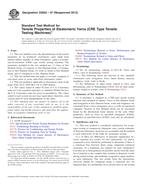
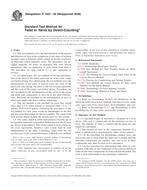 ASTM D1423-02(2008)..
ASTM D1423-02(2008)..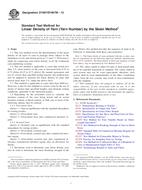 ASTM D1907/D1907M-12..
ASTM D1907/D1907M-12..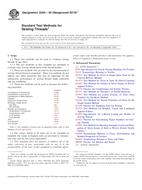 ASTM D204-02(2010)e1..
ASTM D204-02(2010)e1..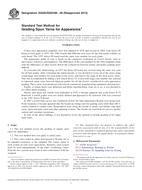 ASTM D2255/D2255M-09..
ASTM D2255/D2255M-09..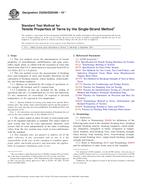 ASTM D2256/D2256M-10..
ASTM D2256/D2256M-10..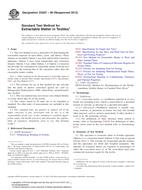 ASTM D2257-98(2012)..
ASTM D2257-98(2012)..
 Cookies
Cookies
